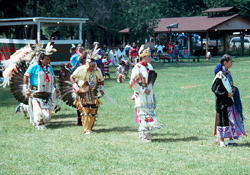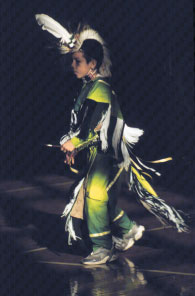| |
|
|
||
| |
|
|
||
| |
| Central Iowa First Nations: Powwow |
Regalia Each dance or song often requires its own outfit. For example, jingle dancers wear dresses decorated with rows of metal jingles made of rolled tobacco can lids. Shawl dancers wear specially decorated shawls. Northern traditional dancers don heavy "eagle" wings and single bustles to mimic the motions of the large birds; this is the oldest dance style and comes from the Umaha (Omaha) people. Grass dancers wear heavily fringed clothing that sways like the grasses they once trampled down to create a dance arena. TOP
Text by Riki Saltzman. Photos by Will Thomson and Riki Saltzman.
|
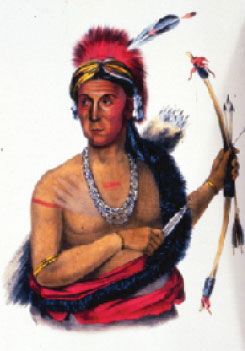
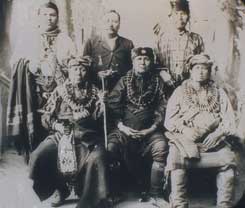

 Powwows are ceremonial gatherings for individual tribes or for a mixture of tribes and sometimes include a public component for non-Indians. Historically, such events marked seasonal changes and occurred when hunting and agricultural work was at a lull. They provided a time to come together, socialize, renew old friendships, celebrate, and pass on Indian heritage and traditions. Today, many powwows still occur at these seasonal times, as well as to honor a particular person.
Powwows are ceremonial gatherings for individual tribes or for a mixture of tribes and sometimes include a public component for non-Indians. Historically, such events marked seasonal changes and occurred when hunting and agricultural work was at a lull. They provided a time to come together, socialize, renew old friendships, celebrate, and pass on Indian heritage and traditions. Today, many powwows still occur at these seasonal times, as well as to honor a particular person. 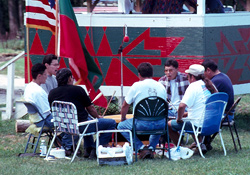
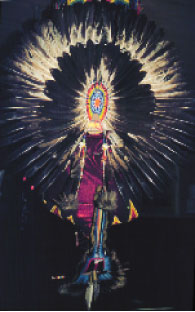 Drum songs range from religious to war to social. Members of different tribes share their songs, sometimes changing them so that all present can join in. As with any living tradition, powwow songs continue to change. Some songs are still sung in native languages, while others are newly composed but in the same style as the old songs. Over time, "vocables" (sung sounds) came into being to replace the words of the old songs. Some songs consist entirely of vocables and no words.
Drum songs range from religious to war to social. Members of different tribes share their songs, sometimes changing them so that all present can join in. As with any living tradition, powwow songs continue to change. Some songs are still sung in native languages, while others are newly composed but in the same style as the old songs. Over time, "vocables" (sung sounds) came into being to replace the words of the old songs. Some songs consist entirely of vocables and no words. 